

European
Nuclear Society
e-news
issue 40: May 2013
In November 2012, as I’m sure many of you are well aware, the European Commission (EC) presented a package of measures to boost research, innovation and competitiveness in Europe. It is called Horizon 2020 and proposes an €80 billion investment programme to cover the period from 2014 to 2020. Under the package the Euratom Programme, which covers the period 2014-2018, should receive €1.79 billion. This will be allocated to fission research, fusion research, and research programmes run by the EC’s Joint Research Centre (JRC).
This flagship initiative supports the fundamental principle that research and innovation are crucial to the creation of jobs and growth in Europe. In addition, it aims to strengthen the EU’s industrial leadership when it comes to innovation. According to the EC, Horizon 2020 should also “provide a major simplification through a single set of rules and will combine all research and innovation funding currently provided through the Framework Programmes for Research and Technical Development, the innovation related activities of the Competitiveness and Innovation Framework Programme (CIP) and the European Institute of Innovation and Technology (EIT).”
Naturally, the life-blood funding that the nuclear research community receives largely determines the current course and future direction of nuclear research in Europe. Whether or not the politics of funding, or indeed politics in general, is your cup of tea, politicians and decision-makers inevitably influence how you ultimately do your job – whether you like it or not. They fashion your working environment, establish your priorities and can increase or decrease the chance that your innovative, groundbreaking work will bring successful solutions to the marketplace. Indifference to or disdain of what some call the “Machiavellian arts” might be an understandable reaction but is perhaps not the best policy to pursue. But how does Horizon 2020 stand up to closer scrutiny and what has been - and should be - the reaction to it from the wider nuclear community?
In September 2012, FORATOM produced an official position paper summarizing the European nuclear industry’s response to Horizon 2020 and providing recommendations as to how it should be improved. While the European industry strongly supports the continuing emphasis on the public funding of nuclear fission research at EU level, and welcomes the overall increase in funding for Framework Programme Seven (FP7) activities provided under Horizon 2020 (€80 billion compared to €53 billion for FP7 activities), it has expressed its disappointment that the proposed funding for fission activities (€355 million as compared to €287 million previously) has not been increased in the same proportion. Although the industry recognizes that safety research should be an important element of the programme, especially after Fukushima, it criticised what it sees as the “almost total dedication of the programme’s scope to safety”, which tends to undermine other important research objectives such as reactor life extension, new reactor designs and the promotion of the European Sustainable Nuclear Industrial Initiative (ESNII) that was launched back in 2010 under the Strategic Energy Technology Plan (SET-Plan).
But what do researchers in the field think? What should the priority areas be? Is the amount set aside for fusion research disproportionately large compared to that for fission? And if so why? What short and long-term effect will inadequate funding in the areas that matter most have on the ability of the research community to deliver? How will such a funding imbalance influence or undermine the overriding aim of Horizon 2020, namely to boost Europe’s growth and competitiveness and to sustain its position as a global research and innovation leader? What more should the nuclear community do to persuade the powers that be to focus on those research areas where an increase in funding is most needed? The answers to these questions may seem pretty obvious, but are politicians and the wider public fully aware of what is at stake? It is in the interest of the whole nuclear research community that they be made aware.
As is often the case, there are probably more questions than answers. ENS NEWS would like to receive and publish the opinions of its readers on the fundamental questions that initiatives like Horizon 2020 raise. It is the views of frontline researchers that should most be heard and listened to.
|
http://www.euronuclear.org/e-news/e-news-40/presidents-contribution.htm


What a busy first quarter of the year it has been for ENS. In addition to the move to our offices, which took place at the beginning of April, the team successfully organized three conferences, set up two new task forces to improve still further the quality of our conferences and took part in a number of different projects and working groups. But before I speak about some of the main events that happened in the first quarter of this year, I would first like to point out that the second “anniversary” of the Fukushima accident and the twenty-seventh “anniversary” of Chernobyl both recently took place. While both events passed by relatively unnoticed, they provided a salutary reminder of the non-negotiable importance of nuclear safety and of its place at the heart of nuclear research and development.
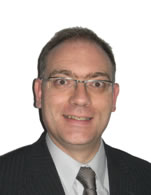 |
We kicked off the 2013 conference programme with PIME 2013, our unique international conference for nuclear communicators. This year’s conference was a special one as it marked the silver jubilee of PIME – it is quite an achievement for such a specialised conference to have stood the test of time so well. Reputation management, crisis communications, media training, social media and communicating science and R&D were just some of the key topics which the over 150 participants addressed in the plenary sessions and hands-on workshops. After having reached this remarkable milestone we decided that it was |
|---|
time to give PIME fresh momentum. Therefore, we set up a new Programme Committee to work on creating even more exciting, relevant and focused PIME programmes in the future.
But in addition to PIME there were also a number of other highly successful conferences that took place since the beginning of the year, events that have become regular fixtures on the international nuclear events circuit. ETRAP, with its focus on education in radiological protection, took place in Vienna, from 12 - 15 March 2013. The programme put the spotlight on basic education and specific training aimed at providing a proper understanding of artificial and natural radiation and its management, standards for the recognition of skills and experience and an opportunity to refresh, update and test acquired knowledge and competence on a regular basis.
RRFM (Research Reactor Fuel Management), one of ENS’s flagship events and the leading one of its kind dedicated to research reactors, was held in St. Petersburg, Russia, from 21 - 25 April 2013. By locating the RRFM conference in St. Petersburg we were able to forge new relations with our Russian colleagues. This will, hopefully, be the precursor for a closer and fruitful cooperation in the years to come.
I mentioned already in my last Word from the President message that we had established a task force to improve the attractiveness of the ENC conference for the European nuclear industry. The first new version of ENC took place in Manchester, UK, in December 2012. Among the main topics discussed were new build, the fuel cycle, life sciences, the varied applications of nuclear technology and plant operations. Now the task force is busy planning for the next ENC, which will be held from 11 – 15 May 2014, in Marseilles, France. The first Programme Committee Meeting will be held on 22 May 2013, in Brussels. So, ENC 2014 is already taking shape and will soon be knocking on your door. Mark the dates down in your diaries now!
ENS has continued to focus considerable time and effort so far this year on the ley issue of education and training. The Programme Committee has been busy working on the programme content for the NESTet 2013 conference, which focuses on education and training in the areas of nuclear engineering and technology and is taking place in Madrid, from 17 - 21 November 2013.
Still on the subject of education and training, a triangle of cooperation between ENS, the European Nuclear Education Network (ENEN) and EHRO-N European Human Resources Observatory in Nuclear has been established. Within the framework of this cooperation the three parties have agreed to exchange information with a view to completing and consolidating their respective databases on education and training opportunities - instead of duplicating them. Following discussions the three organisations agreed that ENEN will provide information on its website on nuclear courses, EHRO-N on education opportunities and ENS on career offers.
Finally, we can look forward as well to the European Nuclear Young Generation Forum (www.ENYGF2013.com) that is taking place soon, from 17 - 20 June 2013, in Stockholm.
I hope that you will participate in this conference and in as many ENS events as possible, thereby making sure that your voice is heard at the debating table and that you can broaden and deepen your network of contacts within the global nuclear research community. This is what ENS is all about.
All the best
Marco Streit
President of ENS
http://www.euronuclear.org/e-news/e-news-40/fukushima.htm

Nuclear education has seen many ups and down since the birth of nuclear technology. Nuclear education, along with nuclear technology, witnessed its peak during the 1960s due to the very high support it received from all stakeholders. In the 1970s, the development of nuclear power technology was severely damaged by local and global nuclear accidents. The Chernobyl nuclear disaster in 1986 helped to further deteriorate the situation for nuclear education, especially in industrialised countries like Germany. During the late 1990s it was believed that the amount of nuclear knowledge would decrease significantly if no counter measures were taken to arrest the declining situation facing nuclear education. Many local, regional, and international efforts were coordinated to restore a proper system of nuclear education. These painstaking efforts regenerated the nuclear education system, but the Fukushima nuclear disaster in 2011 seems to be creating serious obstacles for the restoration of nuclear education in many counties. This research article studies the influence that Fukushima had on nuclear education. For this purpose a worldwide survey based on a well-designed questionnaire was conducted to gather as much information as possible about the trends affecting nuclear education. This questionnaire collected student enrollment data from 2007 to 2012. It was distributed to 210 different institutions in 57 countries that either already have nuclear power programmes or intend to develop a nuclear programme. Out of these 210 institutions, a total of 61 responded to the questionnaire. This survey covers Europe, Asia, and the Americas. Based on these international results the following research paper highlights the impacts that Fukushima had on nuclear education programmes in the individual target countries.
Nuclear technology relies upon nuclear knowledge. The role of nuclear education and training institutions in creating, storing and disseminating nuclear knowledge is recognised globally [1]. Nuclear education has seen its ups and downs during the development of nuclear technology. Figure 1 reflects the historical trends that have influenced nuclear education in the United States. This analysis shows that nuclear engineering programmes and departments were formed in the late 1950’s and 1960’s from interdisciplinary efforts made by many top research universities and provided the manpower needed for this technical discipline. For many of these programmes research reactors were built worldwide and began operating to facilitate research and training in the field of nuclear technology. The 1960s was the heyday for nuclear education as the trend for student enrolment and the availability of nuclear engineering programmes at universities increased sharply [1].
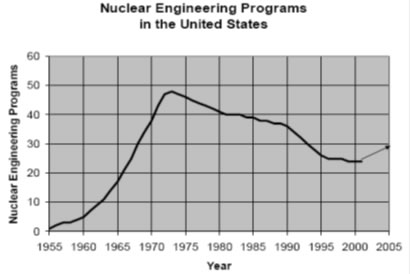
Fig. 1: Historical trends effecting nuclear engineering programmes in the United States.
The development of nuclear power technology has been severely damaged by certain local and global nuclear accidents. A serious decline in student enrolment and a lack of industry interest threatened the sustainability of nuclear technology. Issues like safety and the aging of nuclear facilities and personnel were emerging in many countries and awareness of the importance of nuclear knowledge management in addressing such issues grew significantly. Knowledge management has become an important element of the organisational behaviour of the nuclear industry. The importance of managing nuclear knowledge was recognised at a global level during the IAEA General Conference in 2002 [1], where a new resolution on nuclear knowledge that emphasised the importance of nuclear knowledge management was adopted. In Europe, it was felt that failure to take appropriate steps would seriously jeopardise the provision of adequate expertise. Much serious effort wad put in by governments, industry, and academia to restore and improve the nuclear education system [1, 3]. The improvement in student enrollment was observed in many countries [1].
The questionnaire of the study was designed to gather the most important and easily accessible information available from all universities and was filled in by most of them. To achieve this objective we asked for the following information
Name and country of the institution
Nature and length of the nuclear education programme
Special academic/training programme (if any)
Total number of applications per year
Student enrollment data for the current year (2012)
Enrollment data overlast six years (from 2007 to 2012)
Main employer of the graduates
Inclusion of the Fukushima accident in the course
Student interest in response to the Fukushima accident
Impact of the Fukushima accident onfunding
This survey questionnaire is still available at www.tinyurl.com/ATI-NKM
We also took into account the fact that some universities have more applications than places available and that enrollment numbers would, therefore, be non-representative. In these cases we replaced the number of enrolled students by the number of applicants.
After collecting the data from 29 different countries in Europe, Asia, and the Americas the trends in nuclear education in different regions were identified, reflecting the nature and size of their respective nuclear programmes. It has been only one and half years since the Fukushima accident, which is not long enough to predict the visible influence of the accident. The visibility of trends in nuclear education may take some more time to emerge. Fukushima affected the nuclear environment in some developed countries like Germany, Italy, Austria, Switzerland, and Japan, while in India, Pakistan, and China, public perception is still pro-nuclear and there has been a trend towards an increase in nuclear education. This section is divided into three subsections: Europe, the Americas, and Asia. Out of the 59 responses received, 40 showed complete enrollment records, 11 presented incomplete records, and 8 were unable to provide any enrollment data. It is safe to say that many universities that were contacted did not respond to the questionnaire due to lack of data.
A total of 51 universities reported no change in their budget situation due to Fukushima, 5 institutions reported a decrease in funding, and only 3 institutions saw an increase in their budgets after Fukushima. It is quite troubling to observe that almost 10% reported a decrease in funding, even though nuclear education needs more money to better train professionals.
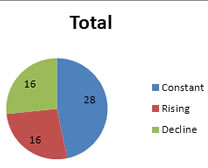 |
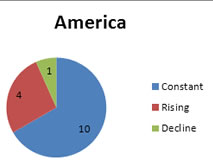 |
|---|---|
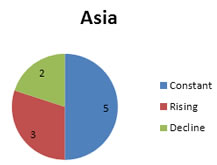 |
 |
Fig. 2: Nuclear education trends in different regions of the world
Before Fukushima the nuclear knowledge management landscape in Europe (EU-27) experienced a growth in variety, as well as in number of instruments and initiatives [6] on offer. The effects of Fukushima on the workforce have been significant in some countries. For example, the main changes that affected the supply/demand ratio for nuclear experts, at least at a national level, occurred in Germany (where 8 nuclear power reactors were taken off the grid and the rest will be closed by 2022), and in Italy (where, in June 2011 a referendum imposed a ban on the reintroduction of nuclear power). In some countries, new build and the replacement of nuclear reactors might have slowed down, but significant changes are not expected in other countries. The industry is still running under full capacity with regards to new build and if one considers full order books. The overall picture is variable, and a clear judgment of the consequences is extremely challenging at this moment. It is, however, clear that there is still a need for highly competent experts on nuclear safety in the EU-27, which should provide a stimulus for good job opportunities in the region for decades to come [6].
To show the real influence of Fukushima responses to the above-described questionnaire were received from 24 different institutions providing nuclear education, located in 18 European countries.
Europe is quite important for the future of nuclear since many countries have their own programmes, but do not coordinate much with one another. EHRO-N has already started to find out how flexible and mobile nuclear experts in Europe are, and how much they are willing to travel or resettle in a new location.
With somewhat contrary perceptions from both citizens and the media, the European nuclear landscape will shift and diversify. Much effort is needed to provide the proper workforce that is needed to make Europe a global player both in nuclear energy production and in R&D.
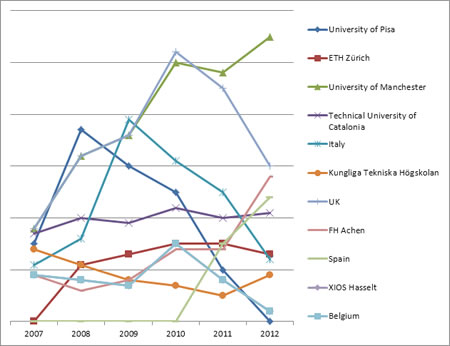
Fig. 3: Pre and post-Fukushima trends in nuclear education in some European countries
China, India, South Korea, Japan, and Pakistan were surveyed to investigate the influence of Fukushima on their respective nuclear education programmes. The trends in nuclear education observed in these countries are summarised in Figure 4. The graph shows completely different trends compared to those observed in European countries. This may be due to the varying nature and demands of nuclear energy in these regions.
However, following Fukushima safety issues in new nuclear power plants are being emphasised in Asian countries.
Fig. 4: Pre and post-Fukushima trends in nuclear education in some Asian countries.
Nuclear education in most Asian countries reflects the development of nuclear technology. Figure 4 presents the slightly mixed trend in nuclear education among Asian countries. Both institutions in South Korea show a slight decline, while Pakistan and Indian institutes demonstrate a slight increase.
Currently, the USA produces 19.2 percent of its electricity from nuclear energy and is in the process of granting 20-year license extensions for most of the country’s 104 operating reactors. The country will continue to obtain a significant portion of its electricity from nuclear power [10]. Fukushima has stressed the need for safety improvements and the United States has begun to take concrete steps to address serious shortcomings in nuclear plant safety and security that have been evident for years.
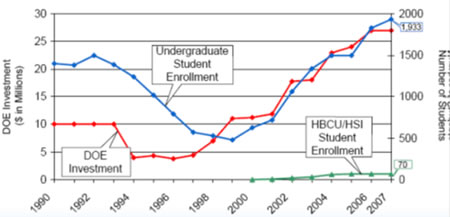
Fig. 5: Improvement in undergraduate student enrollment with DOE investment.
In the late 1990s, the USA made many efforts to imcrease its nuclear education enrollments. As a results of these efforts, student enrollment in US institutions offering nuclear education increased significantly, as can be seen in Figures 5 and 6. It is difficult to predict the real picture behind trends in nuclear education just one year after Fukushima, but the trends become more visible with time. The present survey on nuclear education indicates a gradual slowing down of student enrollment in US universities.
Nine US universities responded to the questionnaire. A response from Canada was also received, but due to a lack of enrollement data it is not included in the analysis. Figure 6 presents student enrollment trends before and after Fukushima.
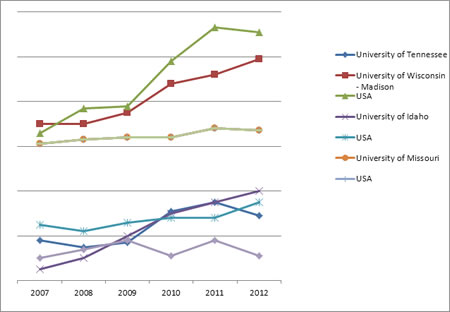
Fig. 6: Pre and post-Fukushima trends in nuclear education in the USA.
Even just one year after Fukushima there has already been a visible effect on the nuclear education enrollment numbers for universities around the world. Because Fukushima occurred, however, student enrollment data over the next 5 years will likely show an increasingly clear and significant influence on nuclear education programmes, stemming directly from the accident.
Survey data indicates that Fukushima resulted in a gradual slowing down of student enrollment in nuclear education programmes in many countries, rather than an immediate cancellation of programs or sudden and drastic increases or decreases in enrollment trends. This shows that the effects of Fukushima accident may not yet be fully realised and that the nuclear industry as a whole is still in the process of reacting to the accident of 2011.
The authors are very grateful to the higher education institutions and nuclear stakeholders who responded to the questionnaire and extended their wishes for further cooperation. In case of queries or suggestions concerning the questionnaire, or our study in general, the authors would appreciate your feedback. Contact them by email at: msalletmaier@ati.ac.at
IAEA Nuclear Energy Series No. NG-T-6.1 Status and Trends in Nuclear Education“ IAEA 2011, Vienna, Austria.
Helmuth Böck, Education and Training in Nuclear Energy: State of the Art, need and Future Strategies, International conference on Research Reactor Fuel management (RRFM 2010), 21 -25 March 2010, Marrakech, Morocco.
OECD publication (2003) Nuclear Legislation in OECD Countries, ISSN 1727-3854.
M. Salletmaier, J. Bannon, H. Böck, R. Khan, Post Fukushima Student Enrollment Study, EHRO-N Meeting 2012, Istanbul, Turkey.
R. Khan, H. Böck, M. Villa, The status and patterns of nuclear education in an anti-nuclear environment, Austria, Int. J. Nuclear Knowledge Management, Vol. 4, No. 3, 2010.
Veronika Simonovska, Ulrik von Estorff, Putting into perspective the supply of demand for nuclear experts by 2020 within EU-27 nuclear energy sector, An EHRO-N report, JRC70083 2012, Publications Office of the European Union, Luxembourg.
World Nuclear Association website, www.world-nuclear.org/info/inf63.html 2011, 22a St James's Square London SW1Y 4JH, United Kingdom.
Rio Tinto, China to become nuclear number one, November 2012, www.news.com.au/news/china-to-become-nuclear-number-one-rio/story-fnejlrpu-1226519612061
Alan McDonald, Nuclear Power Global Status, IAEA website, www.iaea.org/Publications/Magazines/Bulletin/Bull492/49204734548.html
U.S. Nuclear Power after Fukushima, Union of concerned scientists, July 2011, www.ucsusa.org/nuclear_power
Vienna University of Technlogy/Atominstitute
Stadionallee 2, A-1020, Vienna, Austria
Fax: +43-1-58801-14199
Email: boeck@ati.ac.at
Email: markus.salletmaier@gmail.com
Pakistan Institute of Engineering and Applied Sciences (PIEAS),
P.O. Nilore, Islamabad, Pakistan
Fax: +92-51-2208070
Email: rustam@pieas.edu.pk
http://www.euronuclear.org/e-news/e-news-40/sne-news.htm

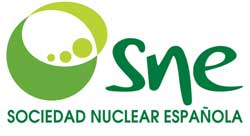
The SNE (Spanish Nuclear Society) recently organised its yearly winter conference Nuclear Power Plants in 2012: Experiences and Perspectives. During the event representatives of the Spanish nuclear industry discussed issues related to nuclear power plant operation during 2012 and the future of the nuclear industry. Once again university representatives, both teachers and students, participated.
This year, the Special Session was devoted to the new Spanish law on New Taxes of Electrical /Nuclear Sector and the speakers presented their views on the impact that this new law will have on the sustainability of electricity supply. The session was moderated by the President of the Spanish Nuclear Society, Francisco José Lopez Garcia, and the guest speakers were Carlos Salle, Regulatory Affairs Manager at Iberdrola Group and Luis María Cazorla, Professor of Financing and Taxes Rights at the University of King Juan Carlos. Their basic messages centred upon the economic impacts that the new law will have on nuclear energy generation and on the wider consequences.
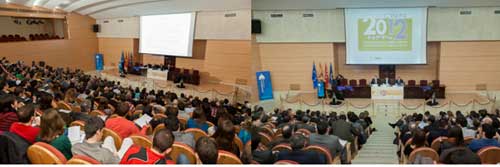
The SNE’s Ordinary General Assembly then took place immediately after the Special Session. The agenda included the nomination of the Society’s President and Vice President. Francisco Lopez and Jose Ramon Torralvo, respectively, were reconfirmed in their positions.
The 39th Annual Meeting of the SNE will be held from 25 - 27 September 2013 in the city of Reus, and will be hosted by ENDESA. All the relevant information about the meeting is available at: www.reunionanualsne.es.
The Nuclear España Best Article Prize this year was awarded to authors of the paper entitled Fukushima: Severe accident, Luis Enrique Herranz Puebla and Mónica Garcia Martin, both from CIEMAT. The Awards Committee also gave an Honorific Mention to the SNE magazine issue entitled 30 years of nuclear information.

Regarding the activities of the Young Generation Network, Jóvenes Nucleares, it is worth highlighting the organisation of the next International Youth Nuclear Congress (IYNC), which will be held in Burgos (Spain) from 6 - 12 July 2014.
The contribution of Spanish nuclear power plants in 2012 to national electricity production was 20.6% of the total. Nuclear generation was the number one generator in Spain, followed by coal (19.3%), wind (16.5%), gas combined cycle (14.2%), cogeneration (13%), hydraulic (8%), other renewables (5.9%) and other fuel (2.5%).
Due to the retroactive application of the new taxes law, which would have had an impact on the NPP of 153 million €, the Santa María de Garoña NPP was shut down at the end of 2012. The rest of Spain’s NPPs started investing in safety upgrade projects following the "stress test" studies. These projects will be finalised by 2016.
http://www.euronuclear.org/e-news/e-news-40/nene-2013.htm


The Nuclear Society of Slovenia cordially invites you to submit your abstracts for the 22nd International Conference Nuclear Energy for New Europe. The conference will be held in the beautiful alpine resort of Bled from 9 - 12 September 2013.
The conference is a well-established annual meeting of professionals from the nuclear research community and educational institutions, nuclear vendors, utilities and regulatory bodies. It attracts around 200 participants from more than 20 countries. The topics discussed are general and include reactor physics, thermal hydraulics, probabilistic safety assessment, severe accidents, nuclear fusion, nuclear power plant operation, nuclear materials, waste management and new reactor designs.
The main theme of the conference will be New Generation(s) for Better Future.
The highlights of the conference will be:
A round table discussion (www.nss.si/nene2013/roundtable);
Several distinguished invited speakers (www.nss.si/nene2013/invited);
Around 10 plenary sessions
3 poster sessions
A competition for young authors
A best poster award
Conference proceedings containing full-length peer reviewed papers presented at the conference
The abstract submission deadline is extended until May 31, 2013.
The conference website URL is www.nss.si/nene2013/.
For more information contact nene2013@ijs.si
http://www.euronuclear.org/e-news/e-news-40/sien.htm

The Romanian Nuclear Energy Association (AREN) would like to inform potential participants that the International Nuclear Energy Symposium (SIEN 2013), initially scheduled for 20 - 24 October 2013, has been postponed to 10 - 14 November 2013.
SIEN is a well-established conference organised by AREN, with the support of traditional partners such as the Romanian Atomic Forum and the Romanian National Representative of the World Energy Council (WEC). The theme of the conference this year is Nuclear Power – Milestones on the Path to Sustainability, which aims to promote a debate on the future of nuclear power in Europe taking into account recent events in Europe and elsewhere. The conference programme will include technical sessions and interactive workshops, one of which will be organised by the Young Generation Network and another by Women in Nuclear (WiN). The conference will conclude with two technical tours, with participants given an opportunity to choose between Cernavoda NPP and the Pitesti Nuclear Fuel Plant and research facility.
For more information and registration, please visit www.sien.ro.
The Romanian Young Generation Network, which is part of AREN, has been involved recently in educational activities aimed at the general public. From 3 – 5 April 2013, the Association was present during the educational fair organized by the Politechnica University of Bucharest, an event that was aimed at attracting high school students to the Nuclear Energy Department of the University. Around 1,000 pupils visited the fair, made contact with the Association and received flyers and information about the opportunities that exist to start a career in the nuclear field.
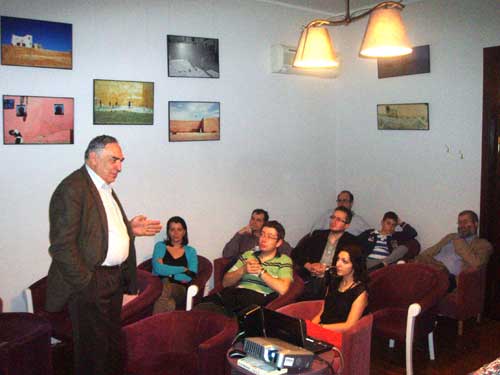
Another activity designed to create a more comfortable and easy interaction between the nuclear industry and the public was organised by AREN on 22 April 2013. It was a pilot event for a planned series of “Science Evenings”. It was hosted by a local teahouse in Bucharest and the subject of the debate was the ELI-NP laser that is being built in Romania, in cooperation with the Czech Republic and Hungary. A presentation was given by Nicolae Victor Zamfir, PhD, the Manager of the ELI-NP laser construction project and the Horia Hulubei National Institute of Physics and Nuclear Engineering. The guests were keen to find out more about what is an important project for Romania and to receive information from a specialist. The Association plans to continue these Science Evenings, which will take place in a sociable and interactive environment and seek to make science more comprehensible and accessible to the public.
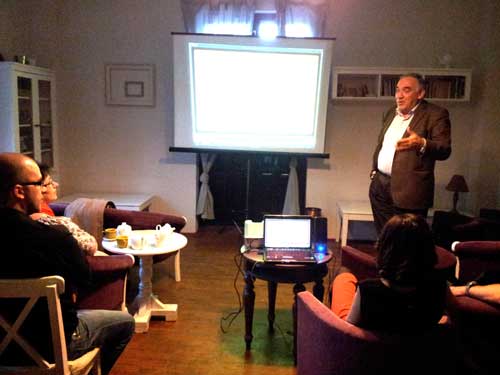
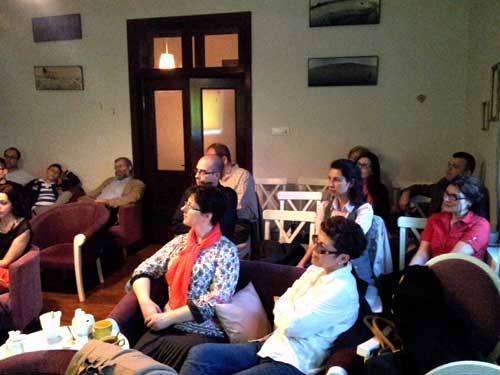
http://www.euronuclear.org/e-news/e-news-40/snus.htm

Children and students from nearby schools have traditionally offered flowers to the Mochovce and Bohunice NPPs - a tradition that is 13 years old now. A group of volunteers, mostly girls, brought bunches of beautiful daffodills onto the NPPs’ premises and presented them to plant personnel. The volunteers’ efforts on Daffodil Day - a fund-raising event is part of a national programme to promote the fight against cancer through the League Against Cancer association - were supported, as is the case every year, by members of the Women in Nuclear (WiN) section of SNUS, who make a great difference with their wholehearted and enthusiastic organisation of the event.
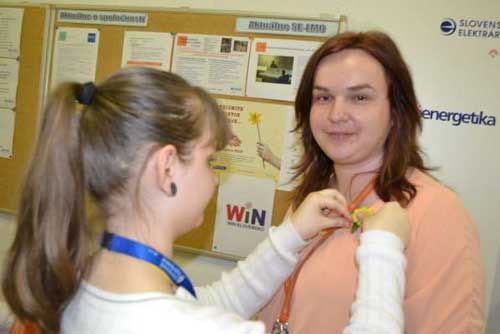
The volunteers who visited the NPPs appreciated the possibility to learn more about subjects like ionising radiation, the operation of a nuclear reactor, uranium pellets, etc. WiN members, in return heard, the latest interesting news and listened to funny stories about life at the schools.
As the culmination of Daffodil Day takes place in cities and towns during working hours the volunteers met employees from other facilities run by the utility Slovenske Elektrarne (SE), e.g. the thermal power plants at Vojany and Novaky, the hydro-power plant at Trencin and SE’s corporate headquarters.
The seventeenth edition of Daffodil Day raised a record amount of money from SE. Some of money is intended for projects aiming primarily at treating cancer patients in all regions of Slovakia, but also for educational campaigns to promote cancer prevention among the general public.
Slovenske Elektrarne supports the League Against Cancer not just on Daffodil Day but also throughout the year. This commitment includes long-term support through initiatives like the “Energy for Life” project.
Daffodil Day, thanks to the excellent organisation of the League Against Cancer and the great response of the public, has become the biggest public fundraising event of its kind in Slovakia.
Zuzana Andrlova
Member of the WIN Coordination Committee
**********************************************************
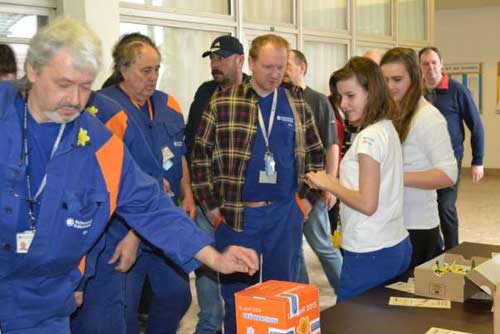
The following heartfelt messages of support prove the real “moral dimension” of the project:
“It was fantastic. As a volunteer-newcomer I got a lot of positive experiences and learn some more English language J. Thanks a lot.”
Viki
“I liked this day very much, mainly because I have never been giving daffodils to people.”
Martinka
“It was very pleasant. People were generally nice and mild. It was very interesting day.”
Angelika
“The whole day was in good mood and we could smile in giving flowers. I hope we helped to collect lot of money and contribute this way to the smile of others, who suffer with the malicious disease so that they also could spend spans of life, albeit short, with a smile.” Andrea
“Super day. Although the sun did not shine, daffodills tickled the heart of many, who were willing to contribute.”
Barbi
http://www.euronuclear.org/e-news/e-news-40/bulgaria.htm

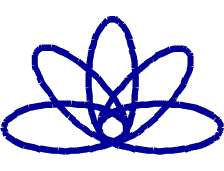
The Bulgarian Nuclear Society, in cooperation with European Nuclear Society (ENS), Bulgarian Atomic Forum (BULATOM) and Kozloduy NPP, will hold its annual conference Nuclear power for people at Sunny Beach, from 18-21 September 2013.
Sunny Beach is the largest and the most popular holiday resort in Bulgaria. During the summer the resort is visited by many thousands of tourists. The main strip of high-rise hotels is several kilometres long and extends along a wide bay between Sveti Vlas and Nessebar.
The resort's construction began back in Communist times, in 1958. Construction works began at a site where two old wells supplying Nessebar with water in ancient times and during the Middle Ages were located.
The climate of the area is Mediterranean, explaining Sunny Beach's popularity with tourists since the time of the Soviet Union. Since then the resort's popularity has grown among German holidaymakers, who add to the already large numbers of Bulgarian and Russian visitors.

More recently, Sunny Beach has begun to attract the attention of British, Irish, Sandinavian and Dutch tourists, for whom it is a more affordable alternative to the established Mediterranean resorts.
The conference is a much-anticipated event for specialists in all fields of application of nuclear energy for benefit of the people, because it allows exchange of ideas and experiences between specialists covering a vast range of topics, including alternative energy sources, radiation protection, environmental protection and others.

There will be a session devoted to the CORONA FP7 Euratom project Establishment of a Regional Center of Competence for VVER Technology and Nuclear Applications. The partners in the project are: Kozloduy Nuclear Power Plant Plc of Bulgaria; the Atomic Energy Research Institute of Hungary; Fortum of Finland; the Institute for Nuclear Research and Nuclear Energy of the Bulgarian Academy of Science; the EC’s JRC (Joint Research Cntre) – Institute of Energy; the National Research Nuclear University of Moscow, Energetic Physics Institute; the Rez Nuclear Research Centre, Czech Republic; PM Dimensions GmbH of Austria; Risk Engineering Ltd of Bulgaria; Tecnatom of Spain and Intellectual Technologies Slavutich, of Ukraine. The partnerswill present and discuss the results of the CORONA pilot training scheme for non-nuclear specialists.
Women in Nuclear (WiN) will share their experiences of working with the young generation and talk about collaboration within WiN and their cooperation with other nuclear organizations.
WiN-Bulgaria is part of WiN-Europe and WiN-Global. The organisation celebrates this year its twentieth anniversary.
For details, registration, deadlines and more go to:
www.bgns.bg/page.php?n=191163&SiteID=802
Ms. Boryana Atanasova, M.Sc.
Bulgarian Nuclear Society
Executive Secretary
Phone: (+359 2) 979 55 83
Mobile:-(+359 87) 7 382 384
Fax:-(+359 2) 975 3619
E-mail: batanasova@inrne.bas.bg
http://www.euronuclear.org/e-news/e-news-40/YG-Reporter.htm


The PIME (Public Information Materials Exchange) Conference is an ENS conference that is held each year and dedicated to communications in the nuclear field. Its objective is to promote the sharing of communications specialists’ strategies and good practices in order to increase the global acceptance of nuclear energy. Indeed, the conference format, with its combination of plenary sessions and workshops focused on specific topics, facilitates the exchange of information, expertise and experience between nuclear communicators from many different countries and organisations and with a variety of backgrounds.
PIME 2013 took place from 17 to 20 February 2013 in Zürich, Switzerland, at the Renaissance Hotel. This was very special PIME as it marked the 25th anniversary of the conference and was jointly organised with FORATOM. While the main thrust of the 2012 conference was a focus on communications issues surrounding the Fukushima crisis, this year’s conference reverted to a range of more general topics, including: Communications in Nuclear over the past 25 years, Reputation Management, Risk Perception and Communication in Nuclear R&D.
The opening session of PIME 2013 kicked off with a welcoming speech from Dr. Marco Streit, the President of ENS. Dr. Streit recalled the role that Zürich has played in the past not only as a financial center but also as a center of excellence in research and the promotion of quality of life. For this purpose, he noted the link between famous scientists - Felix Bloch, the Swiss co-recipient of the Nobel Prize for Physics in 1952; Albert Einstein, the German/Swiss/American recipient of the Nobel Prize for Physics in 1921 and Paul Scherrer, a Professor at the ETH Zürich and the “father of the Swiss nuclear programme” - and writers like Thomas Mann, the German author who won the Nobel Prize for Literature in 1929. Dr. Streit then highlighted the theme of PIME 2013: risk perception and communication.
The opening was followed by a presentation on the host country by the President of the Swiss Nuclear Society, Johannis Nöggerath. Dr. Nöggerath underlined the efforts made in nuclear communications since the Tchernobyl disaster. However, he pointed out the generalised media bias against nuclear power that emerged in Switzerland after the Fukushima disaster. He also mentioned the general lack of technical differentiation that is made between the Fukushima
Daiichi NPP and other NPPs around the world.
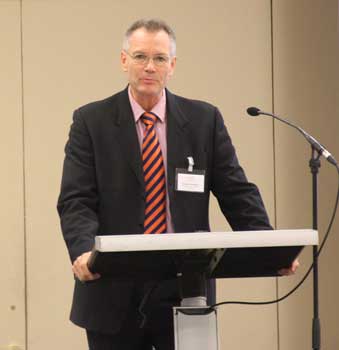
Dr. Nöggerath
This presentation was followed by the first plenary session introduced by Roland Bilang, Secretary General of the Swiss Nuclear Forum. The topic was: Communication over the past 25 years.
Bruno Pellaud, the former Deputy Director of the IAEA and a former President of the Swiss Nuclear Forum, started by explaining the specifics of nuclear communications and in particular the gap that exists between technical facts and public perception. Dr. Pellaud noted how the opponents of nuclear power are well organised, stressing that the nuclear community needs to match their effectiveness. He also remarked that nuclear opponents are generally, oddly enough, considered to be “conflict-of-interests-free.”
Ann MacLachlan, Chef de Bureau of the European office of Platts Nuclear Publications, in Paris, shared her experiences as a seasoned journalist who has reported on nuclear news for nearly 40 years. She underlined the change in paradigm brought about by new communications technologies – especially the necessity to be always faster. She commented that, in our day and age, this has encouraged journalists to sometimes sacrifice factual verification and precision for speed.
Hans Codée, the Managing Director of COVRA (the national waste management company in the Netherlands), explained the importance of transparency in matters of waste management. He presented COVRA’s activities, including the HABOG surface storage facility for high-level-waste (HLW), whose orange painted façade will deliberately be painted in progressively lighter colours over the decades to symbolise the decay of radioactive products. Dr. Codée also showed the need to make buildings enjoyable and accessible to the public through appropriate lighting (instead of the more common «bunker-type» building) and even through the housing of art exhibitions (conditions in waste storages are much similar to those that are required for storing old pieces of art). This inventive way of communicating was much appreciated by the audience.
The conference continued with the second plenary session, which had reputation management as its theme. The next speakers were introduced by Tellervo Taipale, Communications Director of FORATOM. Their presentations were as follows:
Peter Kaiser of the IAEA presented the agency’s experience with reputation management.
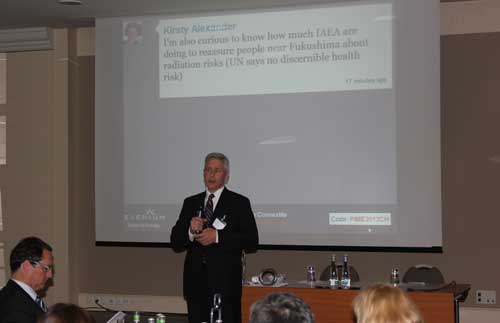
Peter Kaiser
Dr. Millicent Danker, founder of the Perception Management International Group, introduced the principle of stakeholder (any person or organisation affected in some way by a corporate decision) involvement and the importance of communicating with them.
After lunch, three more workshops tokk place in parallel. The first one, moderated by Lisa Berthelot of the IAEA and Vasiliki Tafili, of the Greek Commission of Atomic Energy, dealt with the topic of emergency communications. The second was organised by the Young Generation Network (YGN) and moderated by Andrei Goicea, Chair of ENS – YGN and Dragos Diojdescu, a professional communicator. The topic was the difficulty that engineers and communicators sometimes have when communicating with each other. The third workshop, moderated by Berta Picamal of FORATOM, dealt with the political decision-making process and its application to the field of nuclear politics.
The workshops were followed by the presentations of the four nominees for the PIME 2013 Award for Communications Excellence. The nominees were Forsmark NPP for their communication campaign entitled «Safety First», the Belgian Nuclear Forum for their campaign promoting direct communications with the public through the answering of their questions, the Finnish nuclear industry for the creation of a “virtual tour” tool for communicating basic knowledge about nuclear energy to schoolchildren and, finally, Paks NPP for its communication campaign on Facebook and how they successfully maintained their active Facebook fan-base.
The second and final day of PIME 2013 started with a quick presentation of the results of the workshops on the previous day. This was then followed by the third plenary session, which focused on risk perception. It was chaired by Cora Blankendaal of NRG Communications (the Netherlands).
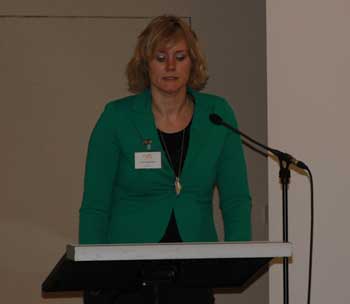
Cora Blankendaal
The first presentation was given by Ingrid Spruit and was related to the need for a proactive issues management strategy. Ingrid quoted the recent case of FedEx who were targeted by online videos showing one of their workers throwing a package over a fence. Fedex apologized less than six hours after the first posting of the video, reassuring its customers that this was contrary to its core values. This is quick response strategy is especially important with modern technologies like the Internet, where information travels fast and the period between the emergence of an issue and the release of information to the public is often very short. To limit the loss of trust in such cases she advocated the use of social networks to build communities and community managers to respond directly to people’s inquiries.
Next up, Phil Davies’ gave a presentation on how to engage stakeholders in communications activities relating to waste management. Phil insisted on the necessity of very personalised communications with local residents, with the objective of encouraging and maintaining a personal relationship and of earning the public’s trust. As was mentioned in earlier topics, he also recalled the need to listen to the people’s concerns and fears. He gave a simple example of how when people complained that a pole belonging to a construction machine did not fit the landscape the construction company simply had it painted in another color, thereby solving the issue.
After a quick coffee break, the second workshop session started. Once again, there was a choice of three for participants to choose from. The first one was moderated by Rémy Le Champion (a professional journalist and media trainer) who provided media training and gave guidance on the difficult art of passing a given message through mass media and all the associated risk of misinterpretation.
The second workshop was organised by Women in Nuclear (WiN) and moderated by WiN’s President, Se-Moon Park and the President of WiN Switzerland, Helena Loner. The topic was «How to communicate with women » and the session also examined the role of the media in the communicating about the Fukushima crisis. Presentations were given by Professor Kepplinger, of the University of Mainz; Dr. Aegaerter, of the Swiss Academy of Sciences and Professor Fischer, of the FHNW (the Technical Institute of Northwestern Switzerland). The presenters highlighted respectively the differences in media reporting in Germany, Switzerland, France and the UK. They also highlighted the importance of having women-specific communications and the strategy of exploiting them for nuclear-related topics, as well as the psychological differences that exist between men and women when it comes to risk perception.
The third and final workshop was moderated by Stephen G. Burns, of the OECD/NEA’s Legal Affairs Department. His talk concentrated on the topic of nuclear liability in the event of accidents and on the importance of effective coordination between the legal and communication departments of companies involved in such accidents.
The workshops were followed by the fourth and final plenary session, whose topic was communicating nuclear R&D. The chairman was Adrian Bull of the National Nuclear Laboratory (NNL) in the UKL.
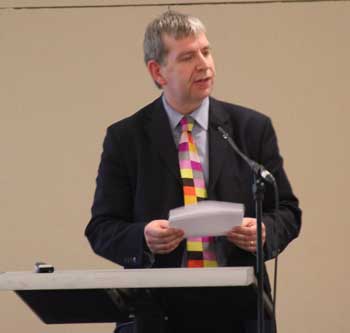
Adrian Bull
Nathalie Guillaume of the CEA presented Pimers with the challenges of communicating research and development issues, as well as the importance of reporting on technological advances that change people’s lives - some of which are not related to the nuclear industry. She gave the examples of two techniques developed at CEA for BSE detection on the one hand, and the search and rescue of people caught in avalanches on the other.
Christian Legrain of the Belgian Nuclear Research Center, SCK-CEN, then presented SCK-CEN’s experiences in this domain. He outlined how they convinced the research community that a communications policy is crucial for a research center. Scientists in the field, according to Christian, are used to being on the defensive, rather than communicating proactively and actually answering the public’s questions. He summarised very well how nuclear research is perceived by the public.
Adrian Bull presented the final part of the session by sharing the experiences of the NNL, in the UK. Much as Christian had previously argued, Adrian favoured an open and active communications policy that focuses on the positive aspects and achievements of nuclear research and counters the negative opinion of the public’s largely accident-influenced response.
Due to the absence of Jean-Pol Poncelet, Dr. Streit delivered a final speech officially closing PIME 2013. He also announced the winner of the PIME 2013 Award for Communications Excellence, which was the Paks NPP, in Hungary. The Belgian Nuclear Forum finished second, each campaign winning a little more than 30% of the vote of the conference participants.
ENS YGN Report
Boris Hombourger
Swiss Young Generation
http://www.euronuclear.org/e-news/e-news-40/YG-Reporter-Etrap.htm


The 5th international Conference on Education and Training in Radiation Protection (ETRAP) opened on 12 March 2013 at the Flemings Hotel in Vienna with a welcome reception.
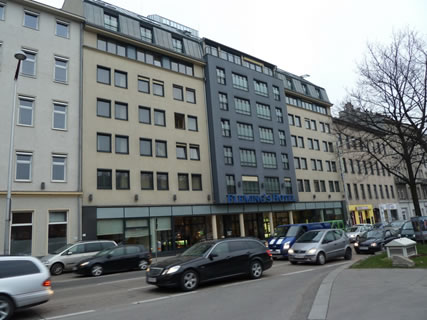
Education and training are the two basic pillars of any policy regarding safety at the workplace. Practitioners who work with radiation sources have a wide range of responsibilities and objectives depending on their work practices, but all will have a threefold common need:
The basic education and specific training that provides the required level of understanding of artificial and natural radiation and its management
Common standards for the recognition of skills and experience
An opportunity to refresh, update and test acquired knowledge and competence on a regular basis
These 3 key phrases were the leading messages frequently articulated throughout the conference, which was attended by over 130 participants from 37 countries. ETRAP has been organised for 14 years. It brings together all users and teachers active in the provision of education and training in the field of radiation protection.
The welcome speech was given by Michelle Coeck of SCK-CEN, who first thanked the organisers and presented the partners whose cooperation had made the conference possible. She also spoke about the main topics that would be presented during the conference, primarily reports about the current situation in countries and national networks, their new projects and ideas and an introduction to new and modern teaching methods and training tools.
A. Heffner, who represented the main organizer, Seibersdorf Laboratories, introduced the other opening session speakers. Ms. M.Schwaiger, from Seibersdorf Laboratories, began by presenting the honoured guests who were present and attended the first presentations. She spoke about the importance of education and training in the radiation protection sector, as reflected by the increased offer education and training opportunities has developed in recent years. She pointed out that three underlining principles are theory, education and training and refreshment of knowledge.
The second welcome address was given by V. Karg, from the Federal Minister of Agriculture, Forestry, Environment and Water Management of the Republic of Austria. After his address P. Soo Hahn, who spoke on behalf of the IAEA, briefly presented the IAEA’s mission with regards to the education and training sector.
The final welcome address was given by Professor E. Gallego, from the Universidad Politecnica in Madrid, who introduced IRPA and pointed out the importance of the stimulus and help provided by the Young Generation.
There then followed a number of presentations from key note speakers. The first one was from G. Simeonov, from the European Commission (EC). The EC is currently working on a revision of the Basic Safety Standards, which will bring together 5 related Directives and the EC’s Recommendation. The main reason for this is the new scientific findings that have emerged, the need to harmonise the legal framework and the experience that has been accumulated in the field of radiation protection. Mr. Simeonov gave a broad overview of current relevant EU legislation and showed what improvements are in the pipeline. One example is the revision of the status of the medical physics expert (MPE), the radiation protection expert (RPE), and the radiation protection officer (RPO).
The second keynote speaker was A. Luciani, from the IAEA, who spoke about the Agency’s role in education and training. He emphasised that a national strategy is essential for achieving good overall standards. He introduced the Regional Training Centres (RTCs), which are essential for this process and will help the Member States with the application of these standards. The strategic approach of the Agency centres around a long-term project (2011-2020) to promote the objective of having the standards applied in all Member States by the end of that period.
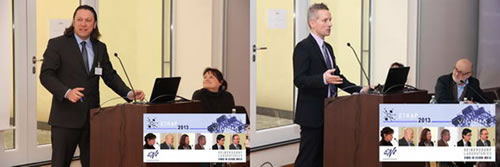
The first technical session of the conference was dedicated to harmonization. Mrs. M. Schwaiger, from Seibersdorf Laboratories, chaired the session, which featured five presentations. First up was R. Van Wezel, who presented the EC’s ECVET (European Credit system for Vocational Education and Training) scheme. He introduced the scheme, which should provide in the near future an easy tool for delivering education and training throughout Europe. It will make it easier to promote life-long learning, transparency, mobility and permeability.
Mr. H.Buurveld then outlined recent developments in the work carried out by the ENETRAP II Working Group 5, which has developed an easier-to-use tool for comparing courses and training provided in the field of radiation protection. He illustrated a four-level validation measurement that is used in the Netherlands and provides a rating scale ranging from 0 (no awareness) to 3 (detailed understanding). As there is a broad range of topics covered by protection not every trained person needs a minimum 3 rating in all levels. This system can be used before the ECVET comes into operation.
The third presentation of the session was given by Mr. Boersma, who highlighted a comparative study that has been carried out in the Netherlands and Germany on low-level RP training. Most people are trained only to a low basic level, and the report maintains that it should be possible to compare the different training possibilities available. The outcome of the study was that the training provided is equivalent in both countries, despite very different national legislation, and that the only difference is that practical experience is obligatory in Germany.
Before the lunch break two more presentations were given, the first by P Livolsi, who introduced establishment the ECVET approach for RPE training. The last speaker in the session was C.J. Caruana, who spoke about the training of medical radiation protection experts (MRPE). The aim is, as with all harmonisation projects, to facilitate the mobility of MRPEs and to be able to compare the different curricula in Europe.
This first afternoon session started with a presentation from Mrs. Z.H.Amador Baldona, who described the situation in Cuba. She explained a safety performance indicator, which is a link between the dose, the number of incidents and the number of workers. As a result of it they were able to reduce this indicator drastically by ensuring that the personnel had the appropriate training.
The second and final presentation, which was given in the absence of L. McCarthy, was from G. Neuwirth, from the Seibersdorf Laboratories. He introduced Austria’s RP training programme, showing the different opportunities that it provides for all kinds of users. He also explained the system of awarding medals for the successful completion of additional courses. This system was tailored to all users coming from the police, fire brigade or military and is very popular.
These two presentations were followed by a short panel discussion, which was moderated by the session chairmen - R. Paynter and A. Luciani.

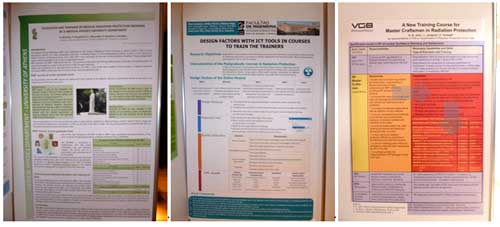
Mrs. S. Kodlulovich kicked off this new session by giving an overview of Medical Physics Education and Training programmes in Latin America. The National Commission for Nuclear Energy launched a survey to get an overview of the training on offer there and of the current situation regarding the employment of Medical Physics. She showed the shortcomings that exist in the programme, for example the ratio between MPs and the number of facilities is quite bad. She also pointed out that the legislation needed to change this issue is often lacking, so there is neither the legal requirement for having MPs at facilities nor the E&T provided for those who are employed there.
Mrs. B.Nasri gave an introduction to the regional training center in Morocco. The concept of regional centres had already been introduced by A. Luciani. This was followed by a speech from F. Hoyler, who outlined the SARA programme. With the help of this programme students are able to gain access more easily to facilties for practical training in RP. The programme was developed by the CHERNE network and is a project being run by 10 institutions in 5 countries.
In the part of the session dedicated to regional training centres, which was chaired by J. Wheatley and E. Gallago, P. Dimitrou showed how they work in Greece. Mrs. A. Schmidt-Hannig outlined the latest outcomes of the Working Group 3 of the ENNTRAP II, which focuses on European guidelines for RPO training.
The final speaker in this session was Mrs. M. Marco, who explained the future potential of a new database, produced by ENENTRAP II, which should hopefully be in operation by this summer. She said that this project would only work if all training facilities updated their information about ongoing events.
The first morning session was chaired jointly by G.Simeonov, together with Mrs. Schmidt- Hannig. They introduced Mrs. O.K.Hakam, who spoke about the current Masters in RP course that is offered in Morocco. She explained the main reason for the establishment of this university course is because of the number of medical facilities that exist in Morocco. The country has 16 radiotherapy stations, 2 cyclotrons and one research reactor. The course, which also includes a mandatory internship of 5 months, is the result of a successful collaboration between different universities. Each year they have between 220 and 230 applicants. Only 10% of them, however, are chosen as suitable candidates for completing the Masters programme.
The next two presentations were dedicated to the UK and its Radioactive Waste Advisors (RWA). First up, Mrs. A. Wright spoke about the implementation of a nationwide RWA programme, which is quite difficult to manage because of the different kind of regulators operating across the country. The implementation of the programme started 10 years ago. The most difficult part was to persuade the nuclear industry to accept these new experts. They wanted to have a pool of experts from which they could choose according to their specific needs.
R. Paynter then gave an insight into the development of a recognition system for the RWAs. In the UK this system only exists for RP Advisers and Medical Physics, but not for RWAs, which is necessary in view of the above-mentioned developments.
The last speaker of this morning session was Mrs. R.D.Silkoset, wo illustrated how the E&T system for Medical Physics in RP in Norway works.
The second morning session was chaired by O.Guzman and H.-F. Boersma. It began with Mr. P.Dimitriou, who gave an overview about the establishment of a national strategy for E&T in RP. He was followed by Mrs. J. Stewart. She spoke about the recognition of RPEs, which was also a project of the ENENTRAP II. R.Elek then explained how the Hungarian RP training system is structured. In Hungary there is a basic level of education provided, mainly for workers in NPPs, and there is also a higher level with specialisation in specific areas, such as radiology or industrial applications.
S-G Jahn then presented the changes that have taken place within the Swiss regulatory system, principally how the RP and E&T programme have been under development for the past two years. The final presentation in the session had to be cancelled, and after the lunch break a poster session followed. Over 30 posters were presented, with the topics featured ranging from national strategies to specific examples in the E&T sector or new learning tools that have been developed in recent years.
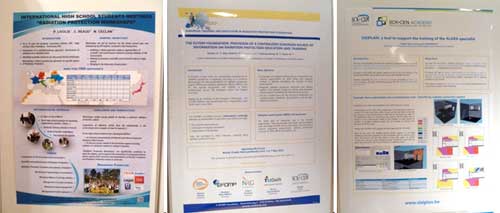
The programme for the first afternoon session was changed a little, and the presentation of A. Timoshenkos was brought forward. Mr. Timoshenko reported on the status of E&T in Belarus, which is currently undergoing big changes. His report was then followed by K. Fornalski, who spoke about RP training in Poland, which is a very important issue for this “nuclear newcomer”.
The next session was chaired by C. Caruana and Mrs. J. Stewart, who introduced the speaker, Mrs. R. Fannin. She gave a remarkable talk about training needs in the veterinarian sector. She showed examples of incidents that have occurred during X-ray diagnostics and outlined the main issues related to taking X-rays of animals. These included, e.g., the question of who is able to pacify the animal? If it is the owner then he/she can potentially be exposed to radiation. Then there is the question of sedation, which may not be the best option for the animal. Another issue is poor working practices and the lack of time and willingness to undergo effective training.
As two presentations were cancelled in this session, there were the only 3 speakers dealing with the first part of the topic.
Mrs. Stewart started the next session with an overview of radiation safety training for emergency responders. Scenarios where emergency responders can be trained with simulated dose rate readings were analysed. The main aim is to teach them how to use correct wording - micro or milisieverts can make a big difference. Also discussed was an assignment that was requested by the stakeholders in the project.
The second talk was given by S. Schönhacker, who showed how police forces and military services are trained in RP in Austria. The most outstanding course that should be mentioned here is the aeroradiometry course, which is a course for officers at the highest level and is a useful tool to use when handling a large contamination scenario in Austria.
Mrs. Shauna was the next presenter in the session, which was chaired by M. Schouwenburg and G. Genard. Mrs. Shauna talked about a subject that had not yet been touched upon during the conference - NORM awareness training. She works with oil and gas workers in the US, and also does research in the area. She said that the workers are not aware of the processes, and that continuous training is necessary, also because of the sometimes quite high dose rate present in sludge deposits (up to 20µSv/h). One huge problem is that the workers do not carry their dosimeters.
She was followed by Mrs. M.Kinker, who gave a report on the lessons learned from the training courses in waste management in 2010 and 2011.
The final speaker was Mrs. K.Holmberg, who highlighted RP training performed in Finland, which is mainly done with the use of videos. The Nordic countries have tried to develop a system that can be used in all countries, so that it is easier for workers to move from one country to the other.
In the evening the conference dinner took place at a traditional Austrian “Heurigen” and proved very popular.

Chaired by Mr. S. Landsberger and M.Marco, this session started with a presentation from P.Massiot. He presented a report from the ENENTRAP II Working Group 7, which focused on the use of a textbook and a cyberbook as useful training tools. The books will be made available for everybody.
The second speaker was Mrs. A. Paulenova, who highlighted the webinars organised by Oregon State Univeristy. The E-Campus concept has been a great success, mainly for people who are working in full time jobs. Indeed, all but 2 of the available courses in their curriculum can be taken as an e-course. Mrs. Paulenova stated though that the webinars demanded more teacher-to-student contact, as often students call, ask for skype conferences or mail messages. She also mentioned that they started organising these webinars because there is a huge lack of radiochemists in the US.
A serious 3-D game was the title of the last presentation in this session. Mr. A.Pin introduced a tool that has been developed for RP training purposes. The CEA simulated certain possible scenarios that might occur in a reactor and the user had to decide how to react, interact and perform his/her duties. The various scenarios included different measuring devices, threat situations and interactive tools.
The topic for this session gave rise to two 2 presentations. It was chaired by Mrs. G. Tudor and Mrs. K.Huitema. The first talk, given by A. Marsh, was about undergraduate-level RP education in the UK and primarily showed the course that is offered by the University of Cumbria. The second presentation was by S. Landsberger, who introduced on-line graduate courses in health physics and radioactive waste management. He showed the different delivery formats that exist, such as blackboards, smartboards and video conferences.
Addressing more directly the topic of public information was J.Sabol, who spoke about the issue of how to inform the public about radiation exposure. He drew his conclusions from his teaching of medical students and paramedics. The main lesson he highlighted is the need to speak to people in layman’s language. They need to understand whether or not there is a real threat to their lives.
The final presentation was given by Mrs. K. Huitema. She showed how to develop an excellent video in order to inform the public about radiation. It is an interactive tool accessible for everybody and easily understandable. The main reason for developing this tool was the Fukushima crisis, and the fact that no easily understandable data was found.
This session, chaired by Mr. G. Meskens, was followed by a panel discussion on the topic of ethics in RP training. Mr. Meskens gave a short introductory presentation on the topic of ethics and risk, and their interaction. Our decisions, he underlined, are either based on knowledge or on values we can rely on. The latter is a problem in the RP area as we cannot always safely rely on any set of values.
The first presentation was given by H. Janssens, who spoke about the training provided by the CHERNE Network. The second presentation was given by M.Koželj. He attempted to define the separation that exists between professional education and RP training. He explained how course participants would often come armed with the wrong expectations.
The joint Chairwomen of this session were Mrs. A.Schmitt-Hannig and with Mrs. J.Stewart. The first talk given was on the new Eratom programme (Horizon 2020), in which all stakeholders should be involved. It was given by G. van Goethem. The second presentation was from V.Smith, who introduced a new initiative called DoReMi that is aimed at providing training in low-dose radiation research, an area where many countries have lost key competences and skills.
C. Caracuna then gave a short introduction to MEDRAPET, as Mr. Damilakis was not available. P.Livolsi then showed the success of international high school student meetings at RP workshops. These workshops were led by teachers and RPEs.
The final presentation was given by Mrs. Stewart, who spoke about the Young Generation Initiative called SRP.
This final session was followed by a panel discussion, which addressed the topic of ongoing and future initiatives at EU-level and international level and crosscutting initiatives. There was a general agreement on the issue that ethical considerations should be included in future E&T discussions and in curricula. One very important point seems to be the definition of what exactly is a safe level of radiation. Another important point mentioned was that the education of children when it comes to radiation should start as early as possible.
Mrs. Coeck gave and R.Paynter then concluded the conference by giving a short summary of proceedings and finished by once again thanking all the conference sponsors and contributors.
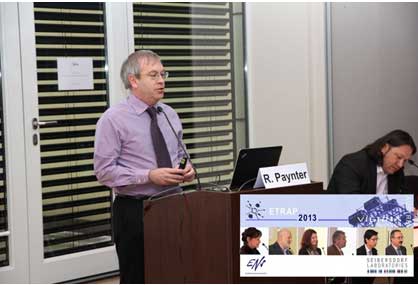
The ETRAP conference provided a unique opportunity to gather together many experts in the field of RP education and training from around the world to exchange ideas, present the latest developments and network on possible future projects.
We would like to thank the organisers for giving us the opportunity to attend the conference as Young Generation reporters.
Eileen Radde
Renate Reininger
ÖKTG
http://www.euronuclear.org/e-news/e-news-40/ENYGF.htm


In June 2013, Stockholm and Sweden will once more host an international conference for young nuclear professionals. With Vattenfall and Westinghouse as main partners, approximately 400 participants from Europe and beyond will get the opportunity to be informed about the latest news in the industry and establish new valuable contacts for the future!
The last time was in 2006,, when over 400 young nuclear professionals from 52 different countries came to Stockholm to participate in the International Youth Nuclear Congress, IYNC. The conference was a success and Sweden has now been elected to host the European Nuclear Young Generation Forum, ENYGF, from June 17th to June 20th.
The conference will consist of lectures by the keynote speakers, workshops, presentation of technical papers and unconference organized around the following three themes:
Operation of nuclear power plants. This theme focuses on issues that are relevant to a nuclear power plant during operation, such as safety culture, plant status, experience feedback, power up-rates and maintenance.
Decommissioning and waste. This theme focuses on how nuclear waste cared for, as well as how a nuclear facility can be phased out. Today, Sweden is one of the most advanced countries in an international comparison when it comes to its work on how to store spent nuclear fuel in deep repositories, which have attracted great interest among EU member states and others.
Nuclear power in the future. Here, those who are interested in areas such as new-build, new reactor concepts and the political future of nuclear can learn more.
The venue for the conference will be the Royal Institute of Technology premises in Stockholm but technical visits to various Swedish destinations within the nuclear field will also be arranged.
We are proud to present our already confirmed keynote speakers:
Torbjörn Wahlborg, Senior Executive Vice President Nuclear Power and member of Vattenfall's Executive Group Management, has been with Vattenfall for more than 18 years and has a wide range of experience from all parts of the value chain. After spending almost 15 years in Poland, he moved back to Sweden in 2010 to head the Business Division Distribution & Sales. Since November 1, 2012, Torbjörn is Head of Business Division Nuclear Power.
Yves Brachet, President, Westinghouse Europe, Middle East and Africa Region brings more than 30 years of nuclear industry experience to his current position where he is responsible for building customer relationships, developing business plans, capturing new markets, and successfully executing existing and new projects. His most recent role was as vice president and managing director – France, Benelux. Yves joined Westinghouse in November 2004 as regional Vice-President for France. Mr Brachet holds an engineering degree from École Centrale de Paris (1975) and a civil engineering degree from Centre des Hautes Etudes de la Construction, Paris (1976). Then, he became docteur-ingénieur (PhD) at Paris VI University (1980).
Åsa and Anders Jackson. She is HR Director for ABB Sweden and he is the former President for Westinghouse EMEA region and CEO for Studsvik. They have been married since their student years and have raised three children, now students themselves. The constant puzzle in life, combining careers, family and other interests is the topic of this keynote session.
Agneta Rising is Director General of the World Nuclear Association, based in London, United Kingdom. Previously she headed a commercial department focused on energy, environment and sustainability at Vattenfall AB.
Claes Thegerström is a senior advisor in the area of nuclear fuel cycle and waste management. He was President and CEO of Swedish Nuclear Fuel and Waste Management Company (SKB) from 2003 until 2012. SKB is an organization established by the Swedish nuclear utilities as a joint company for all matters related to spent fuel and nuclear waste management, including research, technical development and industrial implementation.
Mr Thegerström has worked with matters related to nuclear energy and environmental protection since the mid 70's both in Sweden and internationally (Eurochemic reprocessing plant, 1976-77 and OECD/NEA, 1986 - 1991). He is a member of the Swedish Royal Academy of Engineering Sciences and also a member of CNE, the French National Scientific Evaluation Committee for nuclear waste management.
Peter Wikberg is head of Research and Safety assessment at SKB. With over 25 years of experience in geosphere characterization work from the Swedish radioactive waste management program at SKB, in various disciplines, he got experience from the site investigations for the Äspö Hard Rock Laboratory in Oskarshamn, Sweden, resulting in the actual construction of that facility. Between 2002 and 2008, he was Site Manager of the site investigations in Oskarshamn, responsible for all issues needed to support the licensing of a deep repository for spent nuclear fuel.
Radek Skoda, Ph.D., representing Nuclear Science Center (NPI+NE) at Texas A&M University, United States of America, will guide the audience into the future with his presentation "From old to new reactors".
Sigval Berg is an internationally renowned keynote speaker from the United States of America. Mr Berg is recognized for his inspiring lecturers on leadership and how leadership affects people as well as safety culture in organizations. Mr Berg is well acquainted with these subjects from his career in leading positions in an American Nuclear Power Plant and a nuclear submarine as well as in the industry associations Institute of Nuclear Power Operations (INPO) and The World Association of Nuclear Operators (WANO).
More keynote speakers will be confirmed in a near future.
A panel discussion will be held at ENYGF 2013. The topic will be “Nuclear – A complicated matter. Is it possible to reach a mutual and assertive conclusion about the future of nuclear?”
Sigval Berg will be the moderator of the discussion where four professionals from different parts of the nuclear industry will share their views.
In the workshop section of ENYGF 2013, we can already present:
Mats Ekblad, OKG AB, Project Manager during the implementation of the latest power up-rate of the Swedish Boiling Water Reactor (BWR) Oskarshamn 3. The unit was commissioned in 1985 with a thermal power of 3020 MWth, that was increased to 3300 MWth in 1989 and finally to 3900 MWth in 2009, leaving it the world´s largest BWR at the time when it reached its new power level in 2011. Mr Ekblad will present “Oskarshamn 3 - considerations in Safety Modernization and Power Uprate of an existing Nuclear Plant”.
Angelica Öhrn, PhD, Analyst, Swedish Radiation Safety Authority presents “Operating experience – the best way to improve safety of nuclear power plants”.
Fredrik Arrhén, SP Technical Research Institute of Sweden and Peter Klason, Research engineer, SP Technical Research Institute of Sweden, “The art of correct measurements”.
Susanne Peemöller, Head of Quality Management (Industrial Plant Services), Vattenfall Europe Nuclear Energy GmbH, “Ageing and maintenance management of electrical and I&C components”.
Dr Gabor Laczko, Senior engineer, Mechanical and Systems Engineering, Vattenfall Europe Nuclear Energy and Veronica Lindow, M.Sc. in Engineering, Radwaste & Decommissioning, Vattenfall Engineering, Sweden. “Decommissioning from a European perspective – Aspects of the Vattenfall decommissioning planning and strategy in Germany and Sweden”
Niklas Bergh, Product Leader D&D and Waste Management, Westinghouse and Niklas Leveau, Engineer, Westinghouse Electric Sweden AB, “Important Factors Affecting a Safe, Fast and Cost-Efficient Decommissioning”.
Cheuk Wah Lau, PhD student, Chalmers University of Technology, “Thorium - The fuel of the future”.
Dr Mikael Höök, Associate Professor, Global Energy Systems, Uppsala University, “Nuclear power and fossil fuel depletion: future challenges and opportunities in a global context”.
Mats T. Olsson, Manager Business Development - EMEA Region, Westinghouse Electric Sweden AB and Andreas Fristedt-Åblad, Manager Business Development - EMEA Region, Westinghouse Electric Sweden, “Marketing the Westinghouse’s AP1000 Nuclear Power Plant through Stakeholder Networking”.
Sigval Berg, Director, The Severn Leadership Group, “Followership”.
Emilia Janisz, External Relations Officer, European Nuclear Society, ENS and YGN, “Knowledge Transfer and New Tools”.
Isis Stafford, Project Manager, World Nuclear Association and Mark Bosley, Section Manager - Performance Improvement, Ontario Power Generation, “Leadership”.
More workshops will be confirmed in a near future.
Do you have knowledge that could be useful or interesting for the other conference participants? Prepare your own presentation linked to one of the conference themes and take the chance to present it during ENYGF 2013! This is usually a popular and superb opportunity to interact and network with people with specialized interests similar to yours. You will schedule your session upon arrival and other conference participants will attend your session.
Technical papers will also be presented at ENYGF 2013. Paper submission is now closed.
There are seven different technical tours to choose between to please different interests among the conference participants and to present the Swedish Nuclear Industry in their home arena. Please notice, there is limited number of participants on each technical tour, first come, first served so don’t wait with your registration!
FORSMARK –You will visit Forsmark NPP consisting of three BWRs including the world unique Biotest Basin, a research facility where the relationship between the higher water temperature from unit 1 and 2’s cooling water and biological processes are studied. A visit to Forsmark Iron Village, one of Sweden’s best-preserved historic landmarks, will also be made. Finally, the tour goes to the Final Repository for Short-Lived Radioactive Waste (SFR) where operational low and intermediate-level waste from Swedish nuclear power plants is stored. You will visit the actual repository, one kilometer out from the coast, and get a presentation of the handling of radioactive waste in Sweden.
OSKARSHAMN/SIMPEVARP – You will visit Oskarshamn NPP and take a guided tour of its unit 3, which is one of the worlds’s largest BWRs after an offensive power up-rate implemented in 2009 and get some more information about the three units at the Simpevarp peninsula. In the Swedish model, spent fuel will be placed in copper canisters before its transportation to the final repository. You will visit the Canister Laboratory in Oskarshamn where the technology for the encapsulation of spent nuclear fuel is being developed.
SIMPEVARP – You will visit the Äspö Hard Rock Laboratory (HRL) where much of the research into future final storage of spent nuclear fuel takes place about 500 meters down in the underground. It is in this real environment that various technical solutions are subjected to full scale testing and you will be transported underground into the Swedish bedrock to see this world unique laboratory. Look at the different experiments being carried out and get the full story of the work with taking care of the spent nuclear fuel in Sweden. You will also visit The Interim Facility for Spent Nuclear Fuel (Clab) with its deep water basins in rock vaults 30 meters below ground where all spent fuel from the Swedish nuclear power plants is stored today. Stand at the pool edge and have a look at more than 5000 ton spent nuclear fuel. This is a one-of-the-kind facility and it will be a memorable visit.
VÄSTERÅS - During the full day trip to Westinghouse Electric Sweden in Västerås, you will experience one of the world’s largest and most modern nuclear fuel factories along with visits to their service center and fuel test lab. In The Nuclear Fuel Factory you will be taken on a guided tour that explains how fuel assemblies for PWRs and BWRs are manufactured and handled. In the LWR Service Center, you will be shown a quarter of a full scale reactor vessel where training with maintenance equipment and testing operation is performed. The visit to the fuel test lab, The Nuclear Fuel Thermal Hydraulic Testing Laboratory, will give you an understanding for how testing is made with fuel assemblies and fuel assembly components. The lab hosts the FRIGG and ODEN critical heat flux test loops.
STUDSVIK – You will visit Studsvik Nuclear AB which offers a range of advanced technical services to the international nuclear power industry in such areas as waste treatment, decommissioning, engineering & services, and operating efficiency. The facilities that can be visited on site are the incineration facility, the hot cell laboratory and the material and water chemistry laboratory. AB SVAFOs mission is to handle and store nuclear waste and to decommission nuclear facilities from the early Swedish nuclear research program, in a safe and environmentally way. SVAFO will due to limitations in the group size be able to show you two out of the following three facilities: The permanent closed down research reactors at the R2 facility, the waste handling facility and the intermediate rock cavern storage. Nuclear Safety And Training Center (KSU) delivers comprehensive solutions in the areas of training, development and consultancy. The company is responsible for training nuclear operators at the Swedish nuclear power plants. The training takes place both through theoretical training and by training in control room simulators. KSU will be able to show you how nuclear reactor operators train with the help of control room simulators.
STOCKHOLM 1 - The Swedish Radiation Safety Authority (SSM) is an authority under the Ministry of the Environment with national responsibility for nuclear safety, radiation protection and nuclear non-proliferation. You will get a presentation of the authority and its work. WesDyne Sweden is a wholly owned subsidiary of Westinghouse and a leading supplier of services and products in the field of qualified mechanized non-destructive testing for the international nuclear industry. Operations include development, design, project management, manufacture, sales and marketing of inspection equipment for a number of non-destructive testing methods. You will be visiting WesDyne Sweden facility situated in Täby. Here, specially designed testing equipment for nuclear power plants are developed and manufactured. You will get a full presentation of the company and its products.
STOCKHOLM 2 - Swedish National Grid is a state-owned public utility that has the task to transmit electricity from the major power stations to regional electrical grids, via the national electrical grid. You will, for example, be able to visit their control room monitor where they supervise the national electrical and gas grids and ensure that there is always a balance between consumption and production in Sweden. The nuclear power station Ågesta (ASEA) was the first Swedish commercial nuclear power plant. Construction started in 1957; operations began in 1964 and continued until 1974. The station primarily provided district heating for the Stockholm suburb Farsta, as well as a small amount of electricity. The power station is built in a rock cavern, which is rather unique, and the facility is very well preserved. You will, for example, be able to visit the almost intact control room and reactor hall. This is Swedish nuclear history at its best.
Informal welcome gathering in Tantolunden (Casual), Sunday 16th June - Visit the park Tantolunden the evening before the beginning of the conference to hang out with other conference participants. Take the opportunity to pre-register and meet the ENYGF-committee at Hotel & Hostel Zinkensdamm, located next to the park, before the conference kicks off. Buy some food and drinks in any of the nearby shops or restaurants and have a picnic in the park. If you’re a Viking, finish up with a swim in the lake! Food, snacks and drinks at your own expense.
Welcome dinner at the Vasa museum (Formal), Monday 17th June - Enjoy a tasty dinner in the spectacular banquet hall in the setting0 of the 17th Century Vasa ship. The dinner is included in the conference fee.
Social event and dinner at Kåren (Casual), Wednesday 19th June – Have good food, drinks and music in the company of conference participants from all over the world. Bring comfortable shoes and your best dance moves! The event is included in the conference fee.
Farewell reception including light dinner (Formal), Thursday 20th June - Mingle with your new friends and exchange business cards on this memorable evening. Enjoy another light, Swedish summer’s night before going home or take the opportunity to make midsummer plans with the other participants. The farewell reception is included in the conference fee.
Midsummer celebration, Friday 21th June - Accompany us to Skansen for a traditional Swedish midsummer celebration. Sing and dance around the maypole and get yourself some traditional Swedish midsummer food in any of the food stands, restaurants or cafés. In the evening you have free time to live your own midsummer night’s dream together with your new friends. You can stay at Skansen and enjoy traditional Swedish folk dance or hit the town. Round off by watching the sunrise in the middle of the night.
Additional cost of 200 SEK (includes one way transportation and admission fee).
Dress code - There is no need to bring any special clothes for casual wear. Jeans, trousers or skirts will do fine. For formal wear, a suit or a nice dress will be fine.
For more information, the latest updates and registration, visit our website www.ENYGF2013.com or contact us according to the information stated below.
Welcome!
Filip Gottfridsson, Chairman of the Committee for ENYGF 2013
Phone +46 70-296 98 62
E-mail filip.gottfridsson@vattenfall.com
Carolin Cedergren, Market and information chair of the Committee for ENYGF 2013
Phone +46 76-115 45 69
E-mail carolin.cedergren@okg.eon.se
http://www.euronuclear.org/e-news/e-news-40/atoms-future.htm

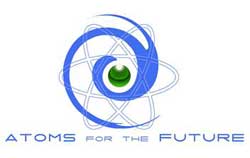
Atoms for the Future is a key international event organised every year by the French Nuclear Energy Society - Young Generation Network (SFEN JG).
The 2012 edition (from 22- 25 October) was dedicated to plant operation and featured top-level speakers such as Luc Oursel, AREVA’s President and Chief Executive Officer, André-Claude Lacoste, former Chairman of the French Nuclear Safety Authority (ASN). About 250 students and young professionals from the nuclear industry participated in the event. Such was the success of the event that SFEN JG has already started organising the 2013 edition of the event. It will be held from 21 – 24 October 2013 and will be dedicated to the subject of Nuclear Energy and the Power Grid. It will consist of 2-days of conferences followed by 2 days of visits, including to an EDF NPP, to the RTE dispatching center and to a cogeneration facility.
The aim of the sessions and visits is to provide participants with a broad view of the interactions between nuclear energy and power grids. They will address economical, technical, scientific and social topics, such as load follow from an operator’s perspective, the market price of electricity, solutions for smart grids and local production of electricity. The programme will also feature a round table session with European power grid operating companies. Luc Oursel has already confirmed that he will give a presentation during the conference on solutions for low-carbon electricity.
For more information go to: www.sfenjg.org/Atoms-for-the-Future-2013
http://www.euronuclear.org/e-news/e-news-40/samama.htm

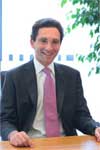
Executive Vice President, AREVA Installed Base Business Unit
http://www.euronuclear.org/e-news/e-news-40/IYNC2014.htm

The International Youth Nuclear Congress is organizing its 8th edition of the young nuclear conference in 2014, in Burgos, Spain. The conference, hosted once every two years, is dedicated to young but also senior nuclear professionals, with the purpose of sharing knowledge and experience in a culturally diverse audience representing all six continents.
IYNC 2014 will take place between July 6-12, in the vibrant historical city of Burgos in Spain and will bring to the attention of participants subjects related to: Plant Operation and Maintenance, Design Modifications, Radiation Protection, New Reactors (Gen 3+ and SMRs), Reactor Physics and Materials (including Advanced Reactors), Nuclear Safety, PRA, Severe Accidents and Fukushima-related topics, Fuel Cycle front-end and nonproliferation, Decommissioning, Waste Management and Fuel Cycle back-end, Nuclear Fusion, Training, HR development, Organizational Factors, Nuclear Politics and Economics, Communication, Social Acceptance, Nuclear Medicine, Non-Electric Power Applications and YGN Best Practices, together with 12 interactive workshops.
If you would like to get involved in the organization of IYNC 2014, the steering committee is currently looking for active and dedicated volunteers and ideas to help with the organization of the conference in the following areas:
Call for ideas for interactive workshop ideas. If you want to propose a certain theme for debate, please send an email to workshop@iync.org , and mention the
concept of the workshop, the speakers, the participation target and the output.
The deadline for submitting ideas is May 10th. More information can be found at:
www.iync.org/images/2014/IYNC14_WorkshopTopicCall.pdf
Call for technical tracks manager. If you can provide support in supervising the
organization of one of the eleven above mentioned technical tracks (incl.
reviewing papers), please send a message to technicaltrack@iync.org. More
information can be found at:
www.iync.org/images/2014/TT%20Call%20for%20Managers.pdf
Call for second webmaster. If you have skills in IT and website maintenance and
would like to help the current IYNC webmaster, Juan Gonzalez, please send an
message to juanalglez@iync.org
http://www.euronuclear.org/e-news/e-news-40/YG-Excursion.htm

Visiting the south of France with the YGN was a project that had been a long time in the making. The idea to visit the Superphénix facility at Creys-Malville first took shape in 2011. As the organisational effort required was demanding it took almost two years to finalise the visit.
The SFEN-YGN provided the link (thanks to Benjamin Levi) to the French facilities and Lars Holt, from the German YGN, and your truly organised the necessary travel arrangements.
The visit began on Sunday 14 April with a joint dinner with a few people from the SFEN in a lovely restaurant in the old city district of Lyon.
On Monday morning, 15 April, all 18 participants gathered together to take the TGV (high speed train) and a bus to the Le Creusot forge. After an interesting presentation about the facility and the part that it plays in the nuclear fuel cycle we got changed and walked right into the foundry hall. Luckily, there was an ingot just coming out of the furnace, ready to be forged. Our guide (Mr. Picot) told us about the different processes involved, the products that Le Creusot manufactures (from loop lines to pressurizers and steam generator and pressure vessel parts) and the different production methods (with whole, short and longer sized ingots). He also mentioned that the cranes transporting the ingots to the furnaces were for a very long time operated exclusively by women.
He also showed us the workshop where the forged parts are cleaned and polished or tested for their material properties. The scrap facility for materials is situated close to the facility, and special trains carry the already warm ingots to the forge.
After a short lunch at Le Creusot, we drove to Chalon-St. Marcel to visit facilities involved in the next part of the cycle. In the Chalon factory the steam generators and pressure vessels are assembled. We were shown new hole drilling machines and were accompanied to where the light medium-sized and heavy components are assembled and where the full steam generators and pressure vessels await shipment to the facilities. The name of each section of the workshop relates to the max lifting force of the cranes used there. The last crane, which places the components onto the ships, has a power of 1000t. Mrs. Vaudon, the Executive Director of SFEN, was our guide on this occasion. She led us safely through all the different parts of the facility and very kindly helped us with some administrative problems.
The next day, Tuesday 16 April, there was also an early start. The bus for the Superphénix left at 7.30 a.m. Although the bus driver needed to be convinced to take us there, we arrived at the facility on time. The security measures there were strict and it took us quite a while to get clearance for entry.
We first had a chance to take a look at the visitor exhibition, which explained different forms of energy production, and then got a good overview of the facility and its history. A retired woman who still works occasionally then joined us and gave us a brilliant guided tour of the facilities in English.
To enter the facility we had to take the bus, which drove around the premises. Inside the facility we had not only to cover our hair and heads with nets and helmets, but also to check our clothing to make sure that we weren’t wearing any other fabric other than cotton. The reason for this is simple: in the facility there is a higher radon concentration level than elsewhere and radon likes all fabrics except for cotton. The group was accompanied by three different people - each of them capable of answering our sometimes very specific questions. We got a good and clear overview of all the necessary components that make up this fast reactor. We were even allowed to visit the former hot cells, where all the fuel elements were checked before being sent to the storage area.
After lunch in the factory cafeteria we went back to Lyon. Our original plan was to do a boat tour in the afternoon, but this was impossible because of high water level of the river Saone.
On Wednesday, 17 April, at 6.30 a.m. we left Lyon for Avignon, or more correctly for Marcoule – the MELOX facility. We were welcomed there by Mr. Combaluzier, who accompanied us to the lecture hall. The presentation he gave about the facility was in German, which was a very kind gesture. To enter the facility and the production areas we had first to fully change into “visitor suits.” Everyone got an individual changing room with a name sticker.

We were separated into two groups and visited several stages along the MOX fuel production line. The production is mainly done in glove boxes due to the high risk of plutonium contamination. We saw the preparation of the sinter process, the control rooms for the sinter processes, the quality checks after the sinter process, the final element assembly process and the rod scanning and quality assurance station.
After each room that we visited we had to do a contamination check, which gave our guide enough time to answer all our questions. Also, I would like to mention the excellent choice of guides for our group. Not only was their English perfect, but their knowledge of the site was very impressive too.
We then had a small lunch buffet and a chance to network with our hosts before returning to Avignon and taking the train to Lyon.
I would like to thank all organizers for their excellent collaboration, the various facilities that we visited for the way they made access so easy for us and, finally, all the participants for the interest that they showed throughout the excursion.
Eileen Radde, Austrian YGN, Seibersdorf, Austria, 25 April 2013
http://www.euronuclear.org/e-news/e-news-40/enusa.htm

ENUSA recently signed a contract with the Chinese fuel manufacturer CNNC Jian Zhong Nuclear Fuel Co. (CJNF) for the design, manufacture and supply of high-tech equipment that will be used for ultrasonic inspection of fuel rods and whose design is equivalent to that of the units installed in the Juzbado factory. The equipment will be made in collaboration with Tecnatom (a leading Spanish company specialized in global advanced engineering services that is active in more than thirty countries), with whom Enusa has signed a collaboration agreement for marketing the equipment. Enusa will be in charge of the commercial leadership and provide the technology and Tecnatom will be responsible for manufacturing the equipment.
Manufacturing of the new equipment will begin immediately and the delivery date is set for the end of 2013, which means a demanding delivery schedule.
This new contract represents an important new development in the company’s progression, since it is Enusa’s first sale to the Chinese nuclear market. The state-run company is making a major effort to stay competitive by opening up new lines of business that respond to the increasingly demanding conditions imposed by the current economic climate. Opening up new markets like China - and also Brazil - is part of this effort.
Furthermore, it is the first sale of equipment developed with in-house technology. This type of technology has already been used in the Juzbado factory for some years, and now Enusa and Tecnatom are marketing it for the first time to service other similar factories. Two units of this kind, developed by a very professional, experienced team, were first installed at the Juzbado factory several years ago.
This very sophisticated equipment is closely linked to final product quality, as it can detect the presence of defects in fuel rod welds with great precision.
Although the core business of Enusa is the manufacture of fuel assemblies in its Juzbado factory, the company is making major efforts to broaden its experience and expertise to new lines of business linked to its main activity. One of these lines is the development and supply of inspection equipment, on which it has been working for many years. This is now beginning to bear fruit since this agreement marks the end of a long period of more than three years of technical discussions and negotiations between the parties.
Enusa, as well as Tecnatom, are members of the Spanish Nuclear Group for Cooperation (SNGC), an association of high-tech Spanish companies devoted to the promotion of their nuclear business in new markets.
The Chinese fuel manufacturer CJNF belongs to the state-owned conglomerate CNNC (China National Nuclear Co.). CJNF operates the main nuclear fuel manufacturing facility in this Asian country, which is located in the city of Yibin, in the province of Sichuan. The Yibin factory plans to triple its installed capacity by 2020 due to the rapid growth of demand for nuclear fuel in China.
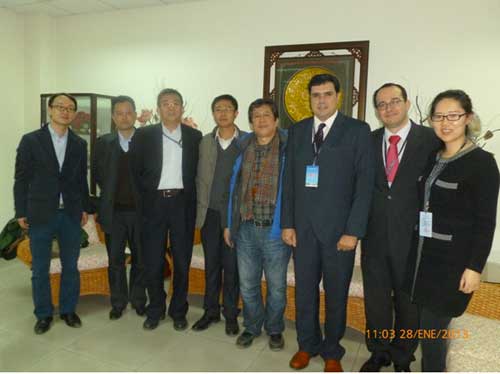
Meeting with the representatives of CNEIC, CJNF, NUTECH, SNGC and ENUSA (Yibin, China)
http://www.euronuclear.org/e-news/e-news-40/l-3.htm

MONTREAL, April 25, 2013 – L-3 MAPPS announced today that the Embalse full scope simulator it developed for Nucleoeléctrica Argentina S.A. (NA-SA) was put into service on March 22, 2013 at the Embalse nuclear power station on the southern shore of a reservoir on the Rio Tercero, near the city of Embalse in Córdoba Province, Argentina. L-3 MAPPS and NA-SA gathered in Córdoba today to celebrate this significant success, a project milestone known as “Ready for Training.”
The simulator will support enhanced operator training for the single unit at the Embalse site – a CANDU 6 pressurized heavy water reactor with a net output of 600 MWe, which went into commercial operation on January 20, 1984. The last full scope CANDU plant simulator L-3 MAPPS developed was for the Qinshan Phase III plant in Zhejiang, China, which entered service in the first quarter of 2003. Since then, L-3 MAPPS has introduced significant technology inroads that the industry has adopted, including plant models developed in L-3’s Orchid® simulation environment, emulation of redundant plant computer systems and highly advanced compact input/output systems, all of which have been applied to making the Embalse simulator completely state-of-the-art.
“Through this development effort, L-3 has produced the most modern full scope CANDU plant simulator using today’s very latest hardware and software technologies and simulation techniques,” said Michael Chatlani, vice president of marketing & sales for L-3 MAPPS Power Systems and Simulation. “This is an important project for L-3 MAPPS as it makes us uniquely qualified to build the next generation of CANDU plant simulators. We are very grateful to NA-SA for giving us the opportunity to advance our solution to this stage.”
“With the Embalse full scope simulator in service, the first major deliverable for the plant’s life extension project has been successfully achieved,” said Rubén Semmoloni, Embalse NPP life extension project director for NA-SA. “We applaud the L-3 MAPPS and NA-SA technical teams for their teamwork and dedication in delivering the simulator, which will be a central part of our personnel training and safety culture for the next 25 years.”
The Embalse full scope simulator features L-3’s leading Orchid simulation environment running on a PC/Windows platform. All of the plant’s simulated operational systems are developed, validated and maintained within Orchid, including the reactor, nuclear steam supply systems, balance of plant systems, electrical systems and I&C systems. The plant computer systems, known as Digital Control Computers (DCCs), are represented with a fully emulated dual DCC that is integrated in the full scope simulator.
L-3 MAPPS, a division of L-3 Marine & Power Systems, has over 30 years of experience in pioneering technological advances in the marine automation field and over 40 years of experience in delivering high-fidelity power plant simulation to leading utilities worldwide. In addition, the company has more than four decades of expertise in supplying plant computer systems for Canadian heavy water reactors. L-3 MAPPS also provides targeted controls and simulation solutions to the space sector. To learn more about L-3 MAPPS, please visit the company’s website at www.L-3com.com/MAPPS.
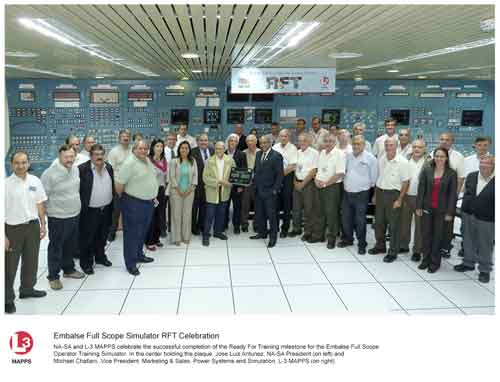
Comprising 25 operating companies, L-3 Marine & Power Systems (L-3 M&PS) is a worldwide leader in maritime automation and control, navigation, communications, dynamic positioning, and power distribution and conditioning for the U.S. Navy, allied foreign navies and commercial customers worldwide. L-3 M&PS also produces full-fidelity simulators for increased operator proficiency, resulting in safe operations for leading international utilities and ship operators. With over 85 locations in 19 countries, L-3 M&PS is a cohesive, global partner with extensive capabilities and a proven track record in delivering the highest level of technology, service and integration. To learn more about L-3 Marine & Power Systems, please visit the company’s website at www.L-3com.com/MPS.
Headquartered in New York City, L-3 employs approximately 51,000 people worldwide and is a prime contractor in C3ISR (Command, Control, Communications, Intelligence, Surveillance and Reconnaissance) systems, aircraft modernization and maintenance, and national security solutions. L-3 is also a leading provider of a broad range of electronic systems used on military and commercial platforms. The company reported 2012 sales of $13.1 billion. To learn more about L-3, please visit the company’s website at www.L-3com.com.
Except for historical information contained herein, the matters set forth in this news release are forward-looking statements. Statements that are predictive in nature, that depend upon or refer to events or conditions or that include words such as “expects,” “anticipates,” “intends,” “plans,” “believes,” “estimates,” “will,” “could” and similar expressions are forward-looking statements. The forward-looking statements set forth above involve a number of risks and uncertainties that could cause actual results to differ materially from any such statement, including the risks and uncertainties discussed in the company’s Safe Harbor Compliance Statement for Forward-Looking Statements included in the company’s recent filings, including Forms 10-K and 10-Q, with the Securities and Exchange Commission. The forward-looking statements speak only as of the date made, and the company undertakes no obligation to update these forward-looking statements.
# # #
CANDU, CANDU 6 and EC6 are registered trademarks of Atomic Energy of Canada Limited, exclusively licensed to Candu Energy Inc.
Orchid is a trademark of L-3 Communications MAPPS Inc. All other products are trademarks of their respective companies.
http://www.euronuclear.org/e-news/e-news-40/FemEnergia.htm


For the 5th year, the Fem’Energia Award will feature young women and women who promote gender development in their commitment to the nuclear sector. Women in Nuclear (WiN) Europe and WiN France and EDF are convinced that nuclear jobs are often wrongly mistaken as “men’s job”. The nuclear field would benefit by welcoming more women in its sector. By pointing up remarkable women since 2009, the Fem’Energia Award promotes the place of women in the nuclear field by showing the ones who have scientific, technical and nuclear technology posts. Thus, its goal is to attract young women and consolidate their choice of working in nuclear.
The following “call for application” and the accompanying flyer should provide ENS NEWS readers with more information about this special award. If you would like to know even more about it, you can contact our friends at WiN France and WiN Europe via the email addresses provided at the end of the application form.
If you are a young woman attending a French high-school or university, or a woman working in the nuclear sector in the European Union and Switzerland, apply for the Fem'Energia Awards 2013.
Through the Fem'Energia Awards, WiN Europe, WiN France and EDF aim to provide encouragement and guidance to young women involved in the nuclear industry.
1. Women working in the nuclear industry in Europe
2. Women working in the nuclear industry in France
1. Vocational secondary school students*
2. Graduate students with 2 or 3 years of higher education*
3. Post graduate students with 4 or 5 years and more of higher education*
(*) in their final graduation year in a French school. Students from the European Union and Switzerland studying in France can apply.
Registration before April 28th, 2013. The Awards ceremony will take place in autumn 2013.
• Each First Prize:
Women working in France : at trip for 2 people (about one week) to a European Union country, including a tour of a nuclear power plant.
Women working in a European Union country, or in Switzerland: a trip for 2 people (about one week) to France, including a tour of a French nuclear plant.
• Each Second Prize: €750 week-end trip for 2 people
• Each Third Prize: €300 gift pack
http://www.euronuclear.org/e-news/e-news-40/other-conferences.htm

EMRS Symposium
27 - 31 May 2013
Strasbourg, France
more
![]()
17 - 20 June 2013
Stockholm, Sweden
more

18 - 20 June 2013
Trnava, Slovakia
more
![]()
23 - 27 June 2013
Marseille, France
more

5 - 8 August 2013
Bruges, Belgium
more

8 - 12 September 2013
Brussels, Belgium
more
![]()
9 - 12 September 2013
Bled, Slovenia
more

15 - 19 September 2013
Charlotte, NC, USA
more

18 - 21 September 2013
Sunny Beach, Bulgaria
more
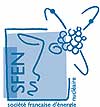
Joint International Conference on "Supercomputing in Nuclear Applications + Monte Carlo"
27 - 31 October 2013
Paris, France
more
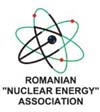
10 - 14 November 2013
Bucharest, Romania
more

11 - 13 November 2013
Prague, Czech Republic
more

2nd International Symposium on Cement-based Materials for Nuclear Wastes
3 - 6 June 2014
Avignon, Popes’ Palace, France
more
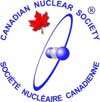
24 - 28 August 2014
Vancouver, Canada
more

Contribution of Materials Investigations and Operating Experience to LWRs’ Safety, Performance and Reliability
14 - 18September 2014
Avignon, Popes’ Palace, France
more
![]()
26 - 31 October 2014
Sapporo, Japan
more
http://www.euronuclear.org/e-news/e-news-40/Member-Societies.htm

Austrian
Nuclear Society |
Belgian
Nuclear Society |
Bulgarian
Nuclear Society |
Croatian
Nuclear Society |
Czech Nuclear Society |
Finnish
Nuclear Society |
French
Nuclear Energy Society (SFEN) |
German
Nuclear Society (KTG) |
Hungarian
Nuclear Society |
The
Israel Nuclear Society |
Italian
Nuclear Association |
Lithuanian
Nuclear Energy Association |
Netherlands Nuclear Society |
The Nuclear Institute |
Nuclear
Society of Russia |
Nuclear
Society of Serbia |
Nuclear
Society of Slovenia |
Polish
Nuclear Society |
Romanian
Nuclear Energy Association (AREN) |
Slovak
Nuclear Society |
Spanish
Nuclear Society |
Swedish
Nuclear Society |
Swiss
Nuclear Society |
http://www.euronuclear.org/e-news/e-news-40/Corporate-Members.htm
Links to ENS Corporate Members |
AF-Colenco Ltd., Nuclear Technology
Department |
Alpiq Ltd |
Alpiq Suisse Ltd. |
Andritz AG |
Ansaldo Nucleare S.p.A |
AREVA NP GmbH |
Atomic Energy Council (AEC) |
Atomic Energy of Canada Limited (AECL) |
Atomexpo LLC |
Atomtex SPE |
Axpo AG |
BKW FMB Energie AG |
Chilean Nuclear Energy Commisssion |
Electrabel, Generation Department |
NV Elektriciteits-Produktiemaatschappij
Zuid-Nederland EPZ |
Electricité de France (EDF), Communication Division |
Euro Nuclear Services BV |
E.O.N Kernkraft GmbH |
ENUSA Industrias Avanzadas SA |
EXCEL Services Corporation |
GE Nuclear Energy |
IEA of Japan Co. Ltd |
Kernkraftwerk Gösgen-Däniken
AG |
Kernkraftwerk Leibstadt AG (KKL), |
L-3 Communications MAPPS Inc. |
Linn High Therm GmbH |
Elektroinstitut Milan Vidmar |
NRG Arnhem |
NRG Petten |
NUKEM Technologies GmbH |
ONET TECHNOLOGIES |
MVM Paks Nuclear Power Plant Ltd |
Paul Scherrer Institute |
Polimaster Ltd |
Siempelkamp Nukleartechnik
GmbH |
|
SKB (Swedish Nuclear Fuel and Waste Management
Company) |
Studiecentrum voor Kernenergie, Centre d’Etude
de l’Energie Nucléaire SCK/CEN |
Synatom |
Taiwan Power Company (Taipower) |
Taiwan Atomic Energy Council (AEC) |
Teollisuuden Voima Oyj / Industrial Power
Company Ltd (TVO) |
Tractebel Engineering S. A. |
UNESA |
Urenco Limited |
Vattenfall AB |
VNS – Vinçotte Nuclear Safety |
VTT Nuclear |
Westinghouse Electric Company |
World Association of Nuclear Operators
(WANO), |
http://www.euronuclear.org/e-news/e-news-40/editorial.htm

Editorial Staff:
Mark O’Donovan, Editor-in-Chief
Contributors to this Issue:
Zuzana Andrlova (WIN Coordination Committeee)
Boryana Atanasova (BNS)
J. Bannon (e-Squard Consulting GmbH)
Helmuth Böck (Vienna University of Technology/Atominstitute)
Boris Hombourger (Swiss Young Generation)
Carolin Cedergreb (Committeee for ENYGF)
Filip Gottfridsson (Committee for ENYGF)
Eileen Radde (ÖKTG)
Renate Reininger (ÖKTG)
K. Rustam (Pakistan Institute of Engineering and Applied Sciences)
M. Salletmaier (Vienna University of Technology/Atominstitute)
Marco Streit (ENS)
Realisation:
Marion Brünglinghaus
Rue Belliard 65, BE-1040 Brussels
Phone +32 2 505 30 50 - Fax: +32 2 502 39 02
E-mail: info@euronuclear.org - http://www.euronuclear.org
The ENS News is a quarterly publication, in electronic
form only.
Copyright notice ©2013 European Nuclear Society.
Reproduction is authorised provided that the ENS News is acknowledged as the
source – except where otherwise stated.
![]()
© European Nuclear Society, 2013